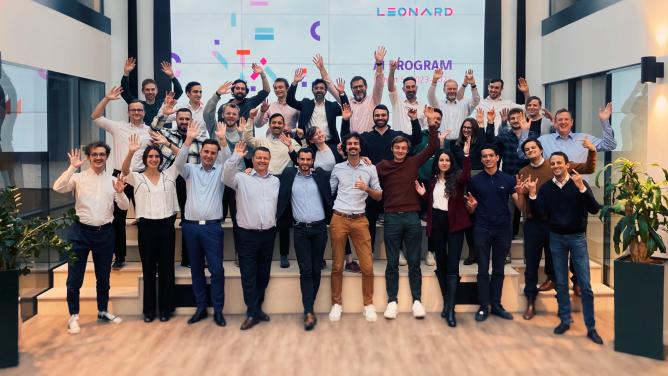It was one of the big announcements of late 2019: The robots giant Boston Dynamics (owned by SoftBank), was combining with HoloBuilder, the specialist in applying imaging technologies to engineering and construction (affiliated with Leonard’s CATALYST programme) to produce an app that makes it possible, using a robot dog, to document progress on a worksite autonomously. Is this just another footnote in the lengthy history of promises of robotic-enabled construction, or the sign of a real switch?
Initial investments are required
HoloBuilder and its competitors make a valuable contribution. They create a bridge between two worlds – that of construction and that of new technologies – that despite all their stated intentions, still lack a common grammar, complementary expertise or even spaces in which synergies can be expressed. As Chloé Clair, CTO of VINCI Construction, tells Leonard, “Innovation becomes a reality primarily where there are clear productivity gains, but also where it is easy to adopt them. Supporting change may have become a cliché, but nothing can replace dedicated teams working at the interface of two ecosystems, who directly support certain key worksites in situ.”
More generally, as this November 2019 study shows, the main factors limiting the adoption of robotics on worksites originate not with customers, but with stakeholders in the construction market themselves. Topping this list of factors is a certain reluctance with regard to the initial capital investment required. More surprisingly, the definite lag compared with other sectors seemingly stems from the absence of a compelling need to improve productivity, owing to a lack of public incentives and (overly) easy access to a sufficiently productive workforce. Aversion to change, insufficient R&D budgets and the lack of a trained workforce may still be obstacles, but if so, they are apparently secondary.
Dispelling the myth of the augmented worksite
Another major lesson from the study carried out by the Big Data Enterprise and Artificial Intelligence Laboratory in Bristol is that the immaturity of technologies (or uncertainty about their effectiveness) does not explain the hitherto limited adoption of robotics on worksites. “The image people have of automation is of a completely robotic and dehumanised worksite, where everything rolls around like on an assembly line,” says Chloé Clair. “But we are actually heading toward new, accessible technologies that adopt robotics for some tasks, or some parts of some tasks.”
Cobotics, which combines humans and robots, is actually the most tangible new frontier in terms of robotic-enabled worksites. Robots for site, a new organisation that emerged from a Leonard project in conjunction with VINCI Energies, VINCI Construction and Eurovia, is focused on the upcoming (mass) launch of “cobots” to take over onerous and repetitive tasks. “Only a tiny proportion of worksites are currently ready to adopt robotics,” says Chloé Clair. “But we are preparing ourselves for it, including by industrialising some processes, such as the prefabrication of concrete components.” This is already under way on some worksites, which within five years, will be receiving increasing quantities of 2D or 3D prefabricated components, in what is becoming an increasingly critical preparation phase.
What are the other (actual) cornerstones of robotic-enabled construction? The alluring exoskeletons and robot “inspectors”, with Boston Dynamics perhaps, or Doxel, but also, quite far removed from the myth of worksite 4.0, automated bricklaying or tying of reinforcement bars. Today, that’s where investments are converging…


